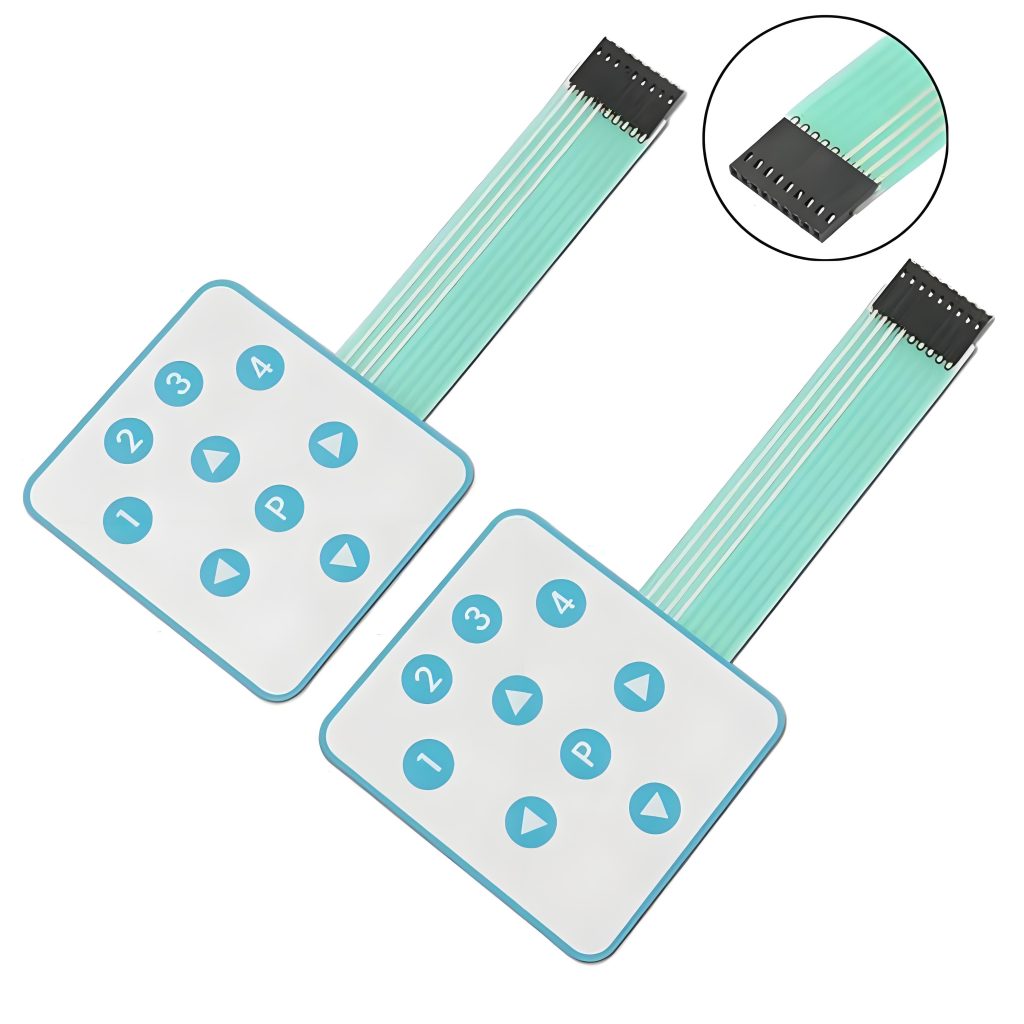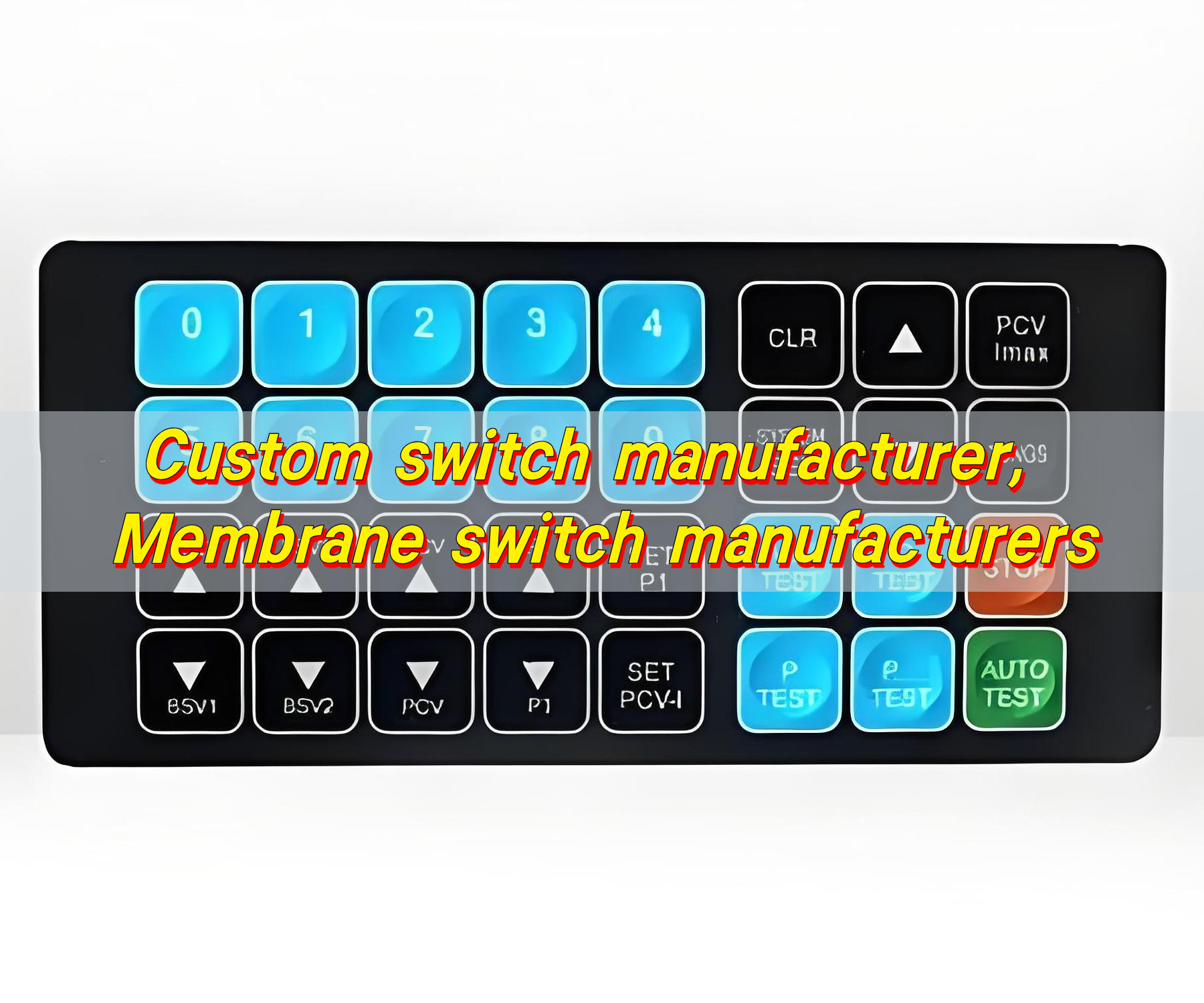
What do membrane switches sound like?
What do membrane switches sound like?
A membrane switch is an electronic component that integrates functions such as buttons, indicating elements, and instrument panels. It usually consists of four parts: a panel, an upper circuit, an isolation layer, and a lower circuit. When a finger presses a membrane switch, the panel will first deform, and then a relatively soft and crisp sound will be emitted.
Are membrane switches quiet?
The membrane switch is very quiet. The noise generated by the membrane switch during operation is extremely low. This is because the key material is made of soft material, and the sound is very small when pressed, which is suitable for use scenarios that require a quiet environment.

The working principle of the membrane switch is to realize the switching function through the vertical bounce of the elastic membrane. When the panel is not pressed, the upper and lower contacts are disconnected, and the isolation layer plays an isolating role; when the panel is pressed, the contacts of the upper circuit deform downward, overlap with the lower circuit, and make the circuit conductive. After the finger is released, the contacts bounce back and the circuit is disconnected. This working mode makes the membrane switch extremely quiet during use.
In addition, the membrane switch has the following advantages:
- Light feel: The keys are made of lightweight soft materials, and the typing feel is good.
- Strong stability: It uses reliable membrane switch technology, with long service life and strong stability.
- Waterproof, dustproof, oil-proof, and anti-corrosion of harmful gases: It has strong environmental adaptability.
- Beautiful appearance: The panel can be washed and the characters are not damaged, with rich colors and beautiful appearance.
Do membrane keyboards make noise?
The noise of membrane keyboards is relatively small. Compared with mechanical keyboards, membrane keyboards generally make less noise because their working principle is to input by pressing down the keycap to make the metal sheet cut off the circuit on the membrane, rather than through mechanical switches. This design makes the sound produced by membrane keyboards relatively small when tapping, which is more suitable for occasions that require a quiet environment.
The noise level of membrane keyboards varies by brand and model. Some membrane keyboards may make more noise than other brands or models, but in general, the noise level of membrane keyboards is still low.
In addition, membrane keyboards are often called “silent waterproof keyboards” because the elastic silicone under their keys can be waterproofed, and even if water is accidentally poured on the keyboard, it is not easy to cause damage.
In general, membrane keyboards are suitable for quiet and waterproof environments due to their low noise level and waterproof characteristics.
Which switch is the quietest?
Silent micro switches and silent touch switches are the quietest types of switches. Silent micro switches usually use PC material (bulletproof glue) as the shell material, which has the characteristics of impact resistance, high temperature resistance, and non-discoloration, and is suitable for electrical control.

Silent touch switches have the following characteristics:
- Silent operation: Compared with traditional mechanical switches, silent touch switches do not produce “click” sounds during operation, achieving silent operation, and are suitable for occasions that need to be kept quiet, such as libraries, hospitals, etc.
- Comfortable touch: The key design is soft, avoiding hand discomfort caused by long-term pressing, and improving the user experience.
- High sensitivity: It can also respond to slight touches without pressing hard, saving the user’s physical strength and increasing the service life of the switch.
- Waterproof and dustproof: It is usually made of materials with good sealing properties, which can effectively prevent the intrusion of water and dust, and is suitable for humid or dusty environments.
- Beautiful and durable: With touch panel design, the appearance is simple and stylish, which can match various interior decoration styles.
- Wide application fields: including home appliances (such as TVs, air conditioners, washing machines, etc.), medical equipment, automotive electronics, industrial automation, office equipment and other fields.
Are membrane switches good?
Membrane switches have many advantages, which make them widely used in many fields.
First of all, the structure and functional characteristics of membrane switches make them outstanding in many aspects. The membrane switch consists of four parts: panel, upper circuit, isolation layer and lower circuit. This design makes the membrane switch waterproof, dustproof, oil-proof, anti-corrosion of harmful gases, stable and reliable performance, light weight, small size and long life.
Secondly, the wide application fields of membrane switches further prove its superiority. Membrane switches are widely used in electronic communications, electronic measuring instruments, industrial control, medical equipment, automotive industry, smart toys, household appliances and other fields. Its good sealing, durability and lightness make it outstanding in these fields.

In addition, the specific application examples of membrane switches also show its effect in practical applications. Metal membrane switches have the characteristics of small size, good conduction, good feel, long life, easy assembly, and good dust resistance. They are widely used in electronic products such as car navigation systems, remote controls, etc.
In summary, membrane switches have excellent performance in many fields due to their rigorous structure, beautiful appearance, good sealing, and strong durability. They are very practical electronic components.
What is the disadvantage of membrane keyboard?
The main disadvantages of membrane keyboards include:
- Poor feel: membrane keyboards lack mechanical devices and have low tactile feedback, which makes it more difficult to make mistakes.
- Short service life: The service life of membrane keyboard keys is relatively short, and the keys are prone to wear after long-term use, especially the keys used at high frequencies.
- Structural problems: The switch of the membrane keyboard consists of three layers of membrane, which is not as stable as the mechanical keyboard in structure. After long-term use, the feel deteriorates significantly and the keys become hard.
- Lack of high-end functions: Most membrane keyboards lack high-end functions.
- Single connection method: membrane keyboards are usually wired, which may not be convenient in some usage scenarios.
Why are membrane keyboards so cheap?
The main reasons for the low price of membrane keyboards include their low material cost, simple production process, and different market demand and positioning.
First, the material cost of membrane keyboards is low. Membrane keyboards use a layer of membrane as a key trigger device. This design reduces the complexity of production materials and processes, thereby reducing manufacturing costs.
In contrast, mechanical keyboards use independent mechanical switches as the trigger device for each key. These switches contain complex mechanical structures, and the manufacturing materials and processes are relatively complex, resulting in relatively high costs.
Second, the production process is simple. The production process of membrane keyboards is relatively simple, and does not require complex mechanical structures and precise assembly processes, which makes its production efficiency higher and further reduces costs.
The sound of membrane switches is usually crisp and has a certain sense of rhythm. This crisp sound allows people to clearly feel the triggering of the keys, thereby improving the accuracy and efficiency of operations.

Membrane switch graphic overlay, Membrane switch and panel
Membrane switch graphic overlay is an outer film printed with button logos and patterns, usually made of PET or PC, which protects the internal circuit and provides an operating interface. It is closely integrated with the membrane switch panel, which is a multi-layer film structure containing a conductive layer and an insulating layer to achieve ...

What are membrane switches? Membrane switch design guide
Membrane switches are thin, flexible interfaces that activate a circuit when pressed. Built from multiple flat layers, they offer a clean look, strong durability, and precise control. Commonly used in medical devices, industrial panels, and consumer electronics, they’re known for being reliable, customizable, and space-saving. What is membrane switch design? Membrane switch design is the ...

Custom Switch Manufacturer, Membrane Switch Manufacturers
A trusted custom switch manufacturer delivers tailored membrane switches that match your product’s design, feel, and function. Whether it’s for medical, industrial, or consumer use, Yu An Electronics turn your ideas into durable, user-friendly solutions. What is a custom membrane switch? Custom membrane switch is a pressure-sensitive keypad made specifically for your product. Unlike standard ...
Contact us online